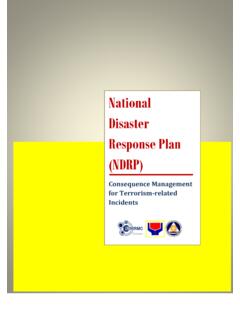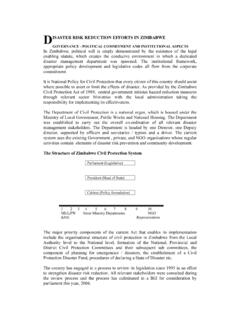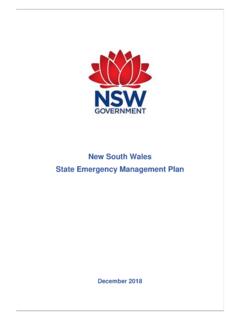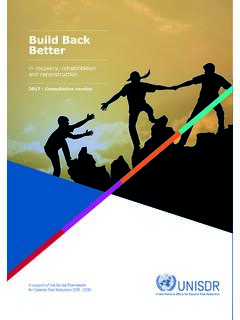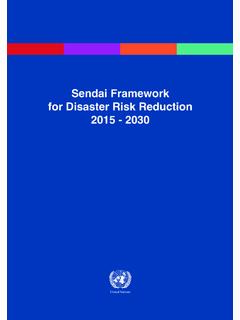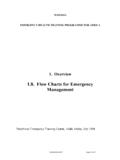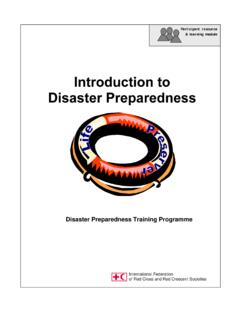Transcription of WorldRiskReport
1 WorldRiskReport 2021 Focus: Social ProtectionWorldRiskReport 2021 ImpressumPublisher WorldRiskReport 2021B ndnis Entwicklung HilftRuhr University Bochum Institute for International Law ofPeace and Armed Conflict (IFHV)Concept and implementationPeter Mucke, B ndnis Entwicklung Hilft, Project leadDr. Katrin Radtke, IFHV, Scientific leadLotte Kirch and Ruben Pr tz, B ndnis Entwicklung Hilft, Editors in chiefJulia Walter, MediaCompany, EditingNaldo Gruden and Karolina Musial, MediaCompany, Graphic design and information graphicsAuthorsDr. Mariya Aleksandrova, German Development InstituteSascha Balasko, Plan InternationalProf.
2 Dr. Markus Kaltenborn, Ruhr University BochumDr. Daniele Malerba, German Development InstitutePeter Mucke, B ndnis Entwicklung HilftOliver Neusch fer, Christoffel-BlindenmissionDr. Katrin Radtke, IFHVR uben Pr tz, B ndnis Entwicklung HilftDr. Christoph Strupat, German Development InstituteDaniel Weller, IFHVN icola Wiebe, Brot f r die WeltIn collaboration withLennart Bade, B ndnis Entwicklung HilftJenifer Gabel, DAHWSr. Dr. Elizabeth Nalloor, RAHA, MisereorAnja O wald, KindernothilfeSilke W rmann, KindernothilfeTranslationLisa Cohen, IFHVISBN 978-3-946785-12-5 The WorldRiskReport has been published annuallysince 2011 by B ndnis Entwicklung HilftResponsible: Peter MuckeImprintWorldRiskReport 2021 2 Foreword The year 2021 has again been strongly marked by the Covid-19 pandemic.
3 In addition, cli-mate-related extreme weather events, includ-ing heat waves, forest fires, and floods, have preoccupied us in many parts of the world. This year, also Germany was severely hit by floods in the West and South. This disaster has shaken many people and made us painfully aware that climate change which makes such floods more likely in many places affects us all and can have devastating effects even on our immediate surroundings. A reappraisal of the causes, also with respect to disaster management, is inevi-table and must lead to a significantly enhanced coordination of responsibilities and to a long overdue ambitious climate protection.
4 At the same time, and despite all the criticism, the floods have shown very clearly that Germa-ny has the capacities to respond to such extreme events. Many buildings and infrastructures withstood the water masses, emergency forces were on the spot, and the majority of those af-fected has swiftly received support. In most cas-es, they have access to social protection and will receive governmental financial support where insurance coverage is not importance of social protection takes cen-ter stage in this year s WorldRiskReport .
5 The articles by our authors highlight the importance of different protection mechanisms and their relevance for disaster risk reduction . Social protection systems respond to the basic needs of people in the event of disaster , strengthen their resilience, and prevent them from auto-matically slipping into poverty. The necessity of a further expansion of social protection and its stronger integration into disaster risk reduction and measures against climate change becomes also evident. From the perspective of science and practice, the report identifies approaches and points out possible solutions.
6 These anal-yses, in combination with the WorldRiskIndex 2021, once again make the WorldRiskReport an important tool for decision-makers in society and politics. Wolf-Christian Ramm Chairman B ndnis Entwicklung HilftProf. Dr. Pierre Thielb rgerExecutive Director IFHVB ndnis Entwicklung Hilft is formed by the aid organizations Brot f r die Welt, Christoffel-Blindenmission, DAHW, Kindernothilfe, medico interna-tional, Misereor, Plan International, terre des hommes, Welthungerhilfe and the associated members German Doctors and Oxfam.
7 In contexts of crises and disasters the member organizations provide short-term relief as well as long-term support in order to overcome poverty and prevent new crises. The Institute for International Law of Peace and Armed Conflict (IFHV) of Ruhr University Bochum is one of the leading institutions in Europe for research and teaching on humanitarian crises. Coming from a long tradition in scientific analysis of international humanitarian law and human rights, the Institute today combines interdisciplinary research in the fields of law, social science, geoscience, and public health.
8 3 WorldRiskReport 2021 Further informationIn-depth information, methodologies, and tables are available at The reports from 2011 2020 can be downloaded there as well. WorldRiskReport 2021 4 WorldRiskReport 4 ContentsKey Findings ..61. Social Protection in Crises and Disasters ..9 Peter Mucke, Ruben Pr tz2. Focus: Social Protection ..17 Crisis and disaster Preparedness through a Global Fund for Social Protection ..17 Markus Kaltenborn, Nicola Wiebe Access to Social Protection Systems through Participation and Inclusion.
9 26 Sascha Balasko, Oliver Neusch fer Building Back Better through Social Protection ..33 Mariya Aleksandrova, Daniele Malerba, Christoph Strupat3. The WorldRiskIndex 2021 ..41 Katrin Radtke, Daniel Weller4. Requirements and Recommendations ..51 B ndnis Entwicklung Hilft, IFHVA ppendix ..53 Bibliography ..60 5 WorldRiskReport 2021 5 WorldRiskReport 2021 Key FindingsWorldRiskIndex 2021 +The WorldRiskIndex 2021 assesses the disaster risk for 181 countries. This covers almost 99 per-cent of the world s population. +A total of ten island states are among the 15 countries with the highest disaster risk.
10 Their risk profile is increasingly also determined by sea-level rise. +The countries with the highest disaster risk worldwide are Vanuatu (WRI ), the Solo-mon Islands (WRI ), and Tonga (WRI ). +Vanuatu is the most exposed, followed by Anti-gua and Barbuda, and Tonga. The most vulner-able country in the world is the Central African Republic, followed by Chad, and the Democratic Republic of the Congo. +Germany has a very low disaster risk. With a value of , Germany ranks 161st in the WorldRiskIndex. +The examples of the Netherlands, Japan, Mauritius, and Trinidad and Tobago illustrate the principle that low or very low vulnerability can drastically reduce disaster risk.
